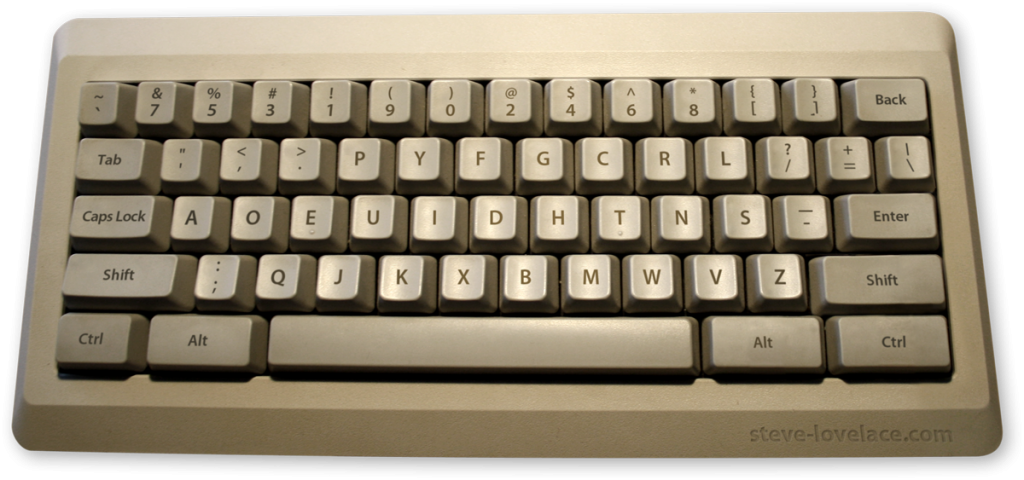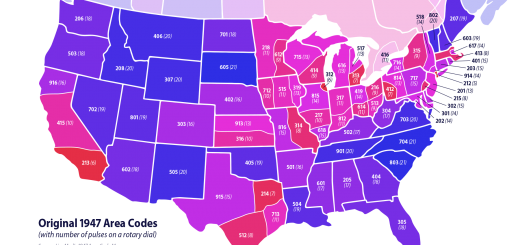The Dvorak Keyboard
Have you ever wondered why the keys on your keyboard are arranged the way they are? Why do they start out with QWERTY instead of ABCDEF? Why aren’t the vowels grouped together? Believe it or not, the letters are all mixed up on purpose. The Qwerty layout exists solely to reduce mechanical problems in 19th century typewriters. Our keyboards are not designed for comfort or efficiency. But there is a keyboard layout out there that is designed with efficiency in mind. It’s called the Dvorak Keyboard, and it’s been around for the better part of a century. So why do we still use Qwerty? To find out, let’s go back to the invention of the first commercially successful typewriter.
The Origins of Qwerty
When Christopher Latham Sholes was working on his typewriter prototype, he initially tried putting the letters in alphabetical order. But when he tested his prototypes with professional stenographers, he found that the levers connected to the letters tended to interfere with each other and jam up the machine. Sholes’ business associate James Denmore suggested moving around the letters to break up some of the more troublesome combinations of letters. After some refinement, the Qwerty keyboard was born. And while later typewriters didn’t have a problem with jamming levers, Sholes’ layout persisted out of habit and tradition.
The Dvorak Keyboard
By the early 20th century, the Qwerty keyboard was woefully out of date, so a psychology professor named August Dvorak (no relation to PC/Computing columnist John C. Dvorak) set out to update it. He studied the frequency of the letters in the English alphabet and way people held their hands when they typed. Dvorak then rearranged the keyboard according to several simple principles:
- Moving the most frequent letters to the “home row”, where they were accessible with minimal acrobatics.
- Grouping the vowels on the left and the bulk of the consonants on the right. Because words tend to alternate between vowels and consonants, this arrangement makes it easier to fall into a left-right-left rhythm while typing.
- Keeping the more common letters and symbols on the right hand side of the keyboard, since most people are right-handed. (Sorry, lefties!)
- Rearranging the numbers with the odds on the left and the evens on the right, with the most commonly used, nine and zero, right in the middle. This last principle was later dropped, since the out-of-order numbers confused even the most zealous of Dvorak’s adherents. It’s hard to go against math.
Success and Failure
To demonstrate the efficiency of his design, August Dvorak trained a number of typists and entered them into typing competitions. To this day, the world record for typing, 212 words per minute, was set on a Dvorak keyboard. But like Betamax tapes, the Dvorak keyboard couldn’t win on its technical merits. For all its quirks, Qwerty worked pretty damn well for people who already knew how to type. In the mid 20th century, that was mostly secretaries who didn’t want to have to learn new job skills or compete against more efficient typists. But late in the 20th century, the Dvorak keyboard had a mini-revival, thanks to the home computer.
The modern computer revolution was started by hobbyists working in their garages. These were people who liked to innovate, and they were ready for a change. Unlike typewriters, computer keyboard layouts could be changed with ease. It was just a matter of software. Not only that, but the early computer keyboards had big plastic keys that snapped into place. With a little patience, you could rearrange the letters on your keyboard to match the Dvorak software. But as computers migrated from the garage to the office, the Dvorak-loving hobbyists lost control. Back in the office, people who knew how to type on Qwerty were eager to preserve the status quo. And as computer keyboards were mass produced, it became harder to change the letters around. By the 21st century, the Dvorak keyboard layout was all but dead.
Dvorak on Touch Screens
I borrowed a friend’s phone the other day and discovered that his on-screen keyboard was Dvorak. That got me to thinking about the future of keyboard layouts. As we move more and more toward touchscreens, we no longer have to worry about physically rearranging the letters on our keyboards. Perhaps it’s time we took another look at the Dvorak keyboard as a viable 21st century alternative.
Have you ever used a Dvorak keyboard? If so, what did you think. Let me know in the comments.









I’ll humbly suggest including other modern layouts in your consideration for the future. For mobile devices, chorded layouts like ASETNIOP have promise for making fast typing within the constraints of touch interfaces.
For regular keyboards, Colemak is worth looking at. After frustration about the learning curve about Dvorak and Colemak, I created my own alternative keyboard layout called Minimak that has most of the benefits of other layouts but is far easier to learn.
Thanks for the article.